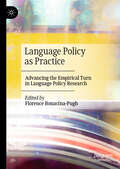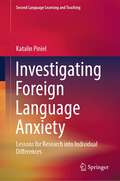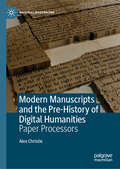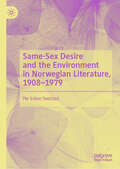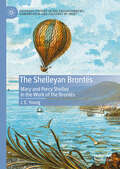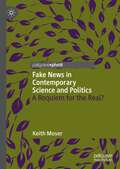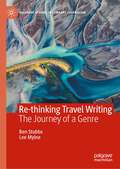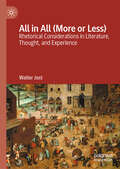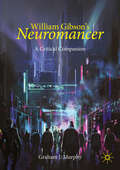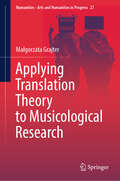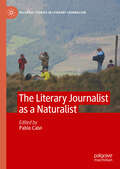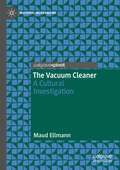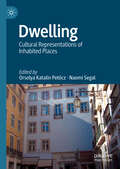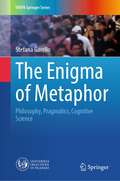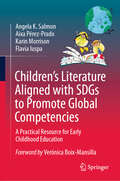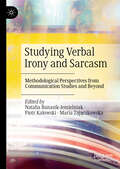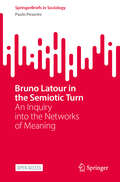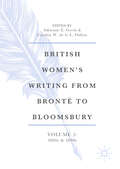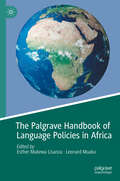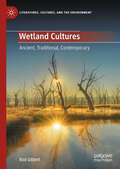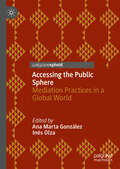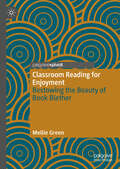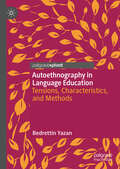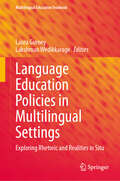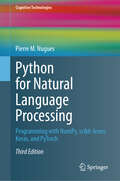- Table View
- List View
Language Policy as Practice: Advancing the Empirical Turn in Language Policy Research
by Florence Bonacina-PughThis edited book brings together original contributions from scholars working across Language Policy and Planning to advance the recent 'Empirical turn' that has taken place in the field. All the chapters in the volume show how Language Policy can be conceptualized 'as practice' in a variety of domains, ranging from the home to the workplace, schools, and higher education. The authors also suggest further theoretical, methodological, and empirical developments for the discipline in light of this epistemological shift. A Foreword and an Afterword shed light on the theoretical and empirical lineage of this volume and show how this book contributes to the humanization of Language Policy research. This book will be of interest to scholars and post-graduate students working across Language Policy and Planning, Language in Education Policy, and Family Language Policy, as well as those in adjacent fields including Education Policy, Classroom Discourse, Linguistic Anthropology, Sociologyof Education, and Multilingualism.
Investigating Foreign Language Anxiety: Lessons for Research into Individual Differences (Second Language Learning and Teaching)
by Katalin PinielThe introduction and a theoretical summary of language anxiety research (Chapter 1) are followed by four chapters: Chapter 2 presents a meta-analysis of the widely used Foreign Language Classroom Anxiety Scale’s (Horwitz, et al., 1986) factorial structure; Chapter 3 reports on a validation study of the Hungarian version of MacIntyre and Gardner’s (1994) Input, Process, and Output Anxiety Scales; Chapter 4 presents the development of a skills-based anxiety questionnaire through a three-phased study consisting of an exploratory qualitative phase as well as two quantitative phases using Rasch analysis; and Chapter 5 focuses on empirical approaches available for tapping into the dynamic change of this emotion, including the idiodynamic method and quantitative analyses such as latent growth curve modeling and dynamic cluster analysis.
Modern Manuscripts and the Pre-History of Digital Humanities: Paper Processors (Material Modernisms)
by Alex ChristieWhile text processing is often associated with the digital humanities, it is still seen as worlds apart from literary modernism and its aesthetic preoccupations. This book upsets that narrative. Examining literary manuscripts from some of the twentieth century's best-known and lesser-known novelists, from Marcel Proust to Mina Loy, Alex Christie reveals where authors experimented with proto-digital writing methods by hand. Instead of looking to computers as sources of inspiration, the authors discussed turned to twentieth-century media for their ability to reveal new layers of the material world. From analog fantasies of contacting the dead to digital anxieties of invisible information, the aesthetic ambitions of these novels can be traced back to their author's interest in emerging media devices and their technical operation. To capture the magic of such devices through writing, these authors devised radical methods for generating literary text, anticipating today's digital humanities.
Same-Sex Desire and the Environment in Norwegian Literature, 1908–1979
by Per Esben SvelstadThis book explores how ideas of nature and the nonhuman play an important part in literary depictions of same-sex desire in twentieth-century Norwegian literature. Critically probing dichotomies such as pastoral/urban and human/animal, the chapters show how literary fiction constructs, represents, and interprets experiences of same-sex love and attraction, traditionally conceived as “unnatural.” Providing in-depth studies of a variety of texts, this book demonstrates the merits of bridging the gap between the “de-naturalizing” project of gender and queer theory on the one hand, and, on the other, the ecocritical centering of material, nonhuman environments.
The Shelleyan Brontës: Mary and Percy Shelley in the Work of the Brontës (Palgrave Studies in the Enlightenment, Romanticism and Cultures of Print)
by J. E. YoungThis book explores the significant textual relationship between Mary and Percy Shelley and the early works of the Brontë siblings. Through a detailed examination of the Shelleyan narrative accessible to the Brontës from their childhood to their final novels, this study argues for a fresh perspective on the Brontës' engagement with the Shelleys in both their juvenilia and later seven novels. In this respect, the book considers the Brontës as readers rather than exclusively as writers, viewing them as a product of the early nineteenth-century literary marketplace which maintained affinities to Romanticism. Reading, rewriting, and appropriating the textual Shelleys was a fundamental vein stemming the Brontës’ writing from childhood, with Mary epitomising the model for what the sisters would eventually become: the female novelist.
Fake News in Contemporary Science and Politics: A Requiem for the Real?
by Keith MoserThis transdisciplinary book investigates the profound repercussions of living in a post-truth world in which 'alternative facts' and post-truth knowledge claims, often bordering on the absurd, have replaced the real in the collective imagination of millions of people around the planet. Through discussions on climate change denial, the anti-vaccination movement, the January 6th Insurrection and the Russia-Ukraine War, this study explores the gravity of the current 'infodemic,' or the increasing inability of a large segment of the population to distinguish between reality and misrepresentation, and the destabilizing impact this infodemic has on democratic models of governance around the globe, coinciding with the rise of autocratic forms of populism.
Re-thinking Travel Writing: The Journey of a Genre (Palgrave Studies in Literary Journalism)
by Lee Mylne Ben StubbsThis book stems from the question that we as co-authors grappled with for the past 3-plus years while in our own periods of stasis during the pandemic: What place does the travel writing genre hold in a post-COVID world? With the massive interruptions to travel and travel writing across 2020-2023 as the pandemic forced us indoors and into isolation, it also raised many other pertinent questions about the practice of and future of travel writing. Part of the prompt for this book comes from the post-pandemic assumption that in an ecologically fraught, less mobile, and more uncertain world, there may not be a place for travel writing as we know it to exist in any meaningful way. We examine the problems and solutions apparent for travel writing as it engages with a period of re-thinking, prompted by the pandemic, though necessary for a plethora of other reasons as well. As academics and travel writing practitioners, with decades of experience in the field, we offer a unique perspectiveon this topic – as we have the in-the-field experience of professional travel writers, and we have the academic grounding to better understand the history, theoretical concerns and contradictions of the genre to provide a more in-depth perspective to our travel writing colleagues. This grounding allows us to access a unique and valuable perspective for Re-thinking Travel Writing: The Journey of a Genre for academics, aspiring travel writers and contemporary colleagues in the field.
All in All (More or Less): Rhetorical Considerations in Literature, Thought, and Experience
by Walter JostThis book reinvents aspects of the rhetorical tradition as part of a philosophical pluralism oriented to “All-in-Allness”. Its chapters unfold some of the ethical and intellectual responsibilities philosophy and rhetoric share, their commitments toward literature broadly conceived, the limited authority of their interpretations, and the kinds of judgments they issue in. Part One, drawing chiefly on Ludwig Wittgenstein and Richard McKeon, leverages a central line of argument regarding “Rationality” in the pragmatism of Robert Brandom. Part Two pivots to specific instances of the range of rhetorical argument found in surprising places and in sophisticated arrangements. The book as a whole culminates in Part Three, where the author demonstrates how “ordinary language criticism” fruitfully bears on cultural models – film, drama, novels, poetry – belonging to “American Low Modernism.”
William Gibson's "Neuromancer": A Critical Companion (Palgrave Science Fiction and Fantasy: A New Canon)
by Graham J. MurphyWilliam Gibson’s Neuromancer: A Critical Companion presents Gibson’s rise as an influential figure within and beyond the science fiction field. Gibson’s success with Neuromancer, the first novel to win the Hugo Award, Nebula Award, and Philip K. Dick Award, is in part a direct result of the rising popularity of cyberpunk in the early- to mid-1980s, although it could just as easily be said cyberpunk’s success was in no small part a direct result of Neuromancer’s explosion onto the science fiction scene.Neuromancer’s ongoing relevance remains undiminished because we are effectively living in a technocultural age that is increasingly difficult to distinguish from Gibson’s novel. As Graham J. Murphy demonstrates in this companion, the novel remains instrumental in thinking through the ongoing explorations of the posthuman:transhumanism, the Utopia/Anti-Utopia dynamic, and capitalist realism, to name a few of themore significant critical vehicles with which to better understand and contextualize our technocultural age and Neuromancer’s role in both shaping it and responding to it. This book provides a critical introduction to Neuromancer and cyberpunk culture.
Applying Translation Theory to Musicological Research (Numanities - Arts and Humanities in Progress #27)
by Małgorzata GrajterThis monograph lays the foundation for new methodologies of research between music and translation. It is the first such holistic attempt—from the perspective of a musicologist—based on the adaptation of translation theories. Until now, these fields have remained underexplored together. Only recently have the tools developed by translation theory permeated into musical scholarship. Such tools should prove as a promising alternative to those offered by classic musicological studies, particularly in reference to musical arrangement, pop music covers and performance. Theoretical discussion on topics are supported by case studies. This text appeals to musicologists and musicians as well as experts in the field of translation theory who are interested in expanding their field of inquiry.
The Literary Journalist as a Naturalist (Palgrave Studies in Literary Journalism)
by Pablo CalviThis book is a scholarly anthology that proposes a deep discussion about the multiple ways in which narrative journalism has portrayed nature, human interactions with nature, the global actions and the consequences of activities that have either attempted to explore it, exploit it, harness it, dominate it, and protect it. This essay collection offers an academic framework for literary journalistic narratives about nature and includes the study of long form journalism originated in different corners of the world, all exploring human-non human-nature interactions in all their power, finitude, peril and urgency.
The Vacuum Cleaner: A Cultural Investigation (Material Modernisms)
by Maud EllmannThis book offers an entertaining study of the facts and fantasies associated with the vacuum cleaner as it evolved from a luxury gimmick to a household necessity. The iconic appliance of twentieth-century domestic revolution, the vacuum cleaner stands at the forefront of radical changes in technology, automation, finance, marketing, hygiene, infrastructure, time-management, domestic labour, and the history of dirt. This appliance also insinuates itself into the dominant phobias of the period, including totalitarianism and nuclear war. Maud Ellmann shows how modern literature, art, and other media have transformed this humble domestic mod con into a curmudgeon, windbag, cannibal, vampire, dictator, infanticidal mother, freedom fighter, mantrap, and lothario.
Dwelling: Cultural Representations of Inhabited Places
by Naomi Segal Orsolya Katalin PetőczDwelling is both an action and a location; it combines the spatial idea of habitation (dwelling in) with the temporal idea of lingering (dwelling on). We live not only in bricks and mortar, a tent, a hut or a spaceship, but also in that most changeful of forms, our body, or in a remembered or virtual home. Especially since COVID-19 we have seen changes in the topography of everyday life. In this multi-disciplinary collection, a complex of meanings is approached from a variety of specific, often personal angles.Framed by two longer essays which theorise how the psychology of home may change under sudden pressure and how social relations are embodied in windows, doors, walls and stairs, the book includes 18 further essays. Part I, ‘Informal settlements’, shows how a slum, urban development or nomadic life may create a self-sustaining identity; in Part II, ‘Huts and bridges’, impermanence shapes the state of dwelling, while Part III, ‘Liminal bodies’, presents bodies suspended at thresholds of change. Movement in time and space characterises the last three sections: Part IV, ‘Moving home’, depicts transitions and arrivals, Part V, ‘Dwelling in Memory’, focuses on recollections of past places and Part VI, ‘Are we there yet?’, points the way to a future in which the consulting-room changes to 2D, a family is exiled onto the small screen or we imagine breaking away altogether into outer space.
The Enigma of Metaphor: Philosophy, Pragmatics, Cognitive Science (UNIPA Springer Series)
by Stefana GarelloThis book deals with the complicated realm of metaphor, an enigma deeply embedded in language and cognition. There has been much discussion of metaphor in the past, but it was characterized by a certain fragmentation and lacked interdisciplinarity. In this field of study, the dominance of Cognitive Linguistics, epitomized by the Conceptual Metaphor Theory of George Lakoff and Mark Johnson, has caused the marginalization of alternative perspectives. To fill this gap, this book embarks on an interdisciplinary journey, inviting different theoretical frameworks to engage in a fruitful dialog. It navigates the labyrinth of theories and illuminates the nuanced facets of metaphor.At the center of this exploration are three central questions: whether metaphor belongs to the realm of style or thought, the intricate interplays between literal and metaphorical meanings and the integration of propositional and non-propositional elements in the construction of metaphorical meaning.Through a careful blend of historical analysis and contemporary hypotheses, the book unravels the complexities of metaphor, considering its evolution across the centuries and the myriad interpretations it evokes. By bringing together work from different fields, it ultimately shows that a definition of metaphor is theory-dependent and that metaphor is not a natural kind, but a complex and multifaceted philosophical concept whose study requires a multi-dimensional approach that transcends narrow theoretical boundaries. In this way, the book explores these considerations’ most important philosophical consequences and offers new insights into this fundamental aspect of human language.
Children’s Literature Aligned with SDGs to Promote Global Competencies: A Practical Resource for Early Childhood Education
by Karin Morrison Angela K. Salmon Aixa Pérez-Prado Flavia IuspaThis book presents children’s literature as a platform for learning and helping young readers develop the knowledge, skills, and attitudes needed to thrive in an interconnected and diverse global society. It draws from various theoretical frameworks and research findings to implement critical literacy and culturally responsive teaching in the meaning-making process.The book focuses on global competencies and Sustainable Development Goals (SDGs) as intertwined concepts that work together to foster a more sustainable, inclusive, and equitable world. Developing global competencies empowers children and communities to actively participate in achieving the SDGs and addressing the pressing challenges of our time. The authors set high expectations on children as actors in transforming society. To facilitate this, the book offers an overview of child development theories as a foundation for designing developmentally appropriate practices to extend children’s books toward deep thinking and understanding. The book includes sample lessons that use cutting-edge research-based pedagogies and tools such as visible thinking routines and other approaches. Those lessons also help readers identify the Habits of Mind (HOM) children can develop by listening to and discussing stories. The HOM are attributes of good problem-finders and problem-solvers needed when confronting complex issues. The book provides resources and sample lessons that implement different thinking strategies to engage children in questioning and analyzing what they read, making them more critical. This is how children deeply understand the world and their role in creating positive change. The book aims to cultivate change-makers and global citizens through stories. It offers innovative approaches, including online learning options in accessible and engaging ways to help children think globally and act locally‘Through the power of children’s literature, this book serves a larger agenda: To build a more thoughtful world for future generations. By caring for and learning from one another through suggested activities in this book, they will share the riches and resources from across the world. As children learn about the promise of actions toward the UN Sustainable Goals, they can imagine living in an interdependent learning community where all people continually searching for ways to trust each other, learn together, and grow toward greater intelligence.’ Arthur Costa and Bena Kallick, Co-Founders and Directors of The Institute for Habits of Mind
Studying Verbal Irony and Sarcasm: Methodological Perspectives from Communication Studies and Beyond
by Natalia Banasik-Jemielniak Piotr Kałowski Maria ZajączkowskaThis volume provides a comprehensive yet accessible introduction to the phenomenon of verbal irony and sarcasm and the methodological aspects of its study. The chapters employ quantitative and qualitative measures of the use of verbal irony and sarcasm in both adults and children, with methods ranging from questionnaires and comment elicitation through experimental studies to a qualitative analysis of naturalistic data. By examining the phenomena in a range of contexts, the volume also show that cultural norms of communication may affect both the use and understanding of irony in specific ways and should therefore be taken into account in research.
Bruno Latour in the Semiotic Turn: An Inquiry into the Networks of Meaning (SpringerBriefs in Sociology)
by Paolo PeveriniThis open access book highlights the link between Bruno Latour's works and the semiotic perspective on social phenomena analysis. It identifies and relaunches a dialogue that was as heated as it was fruitful, but still little recognized within the social sciences. It asks why the theory of signification has so far been only sporadically acknowledged in literature derived from Latour's work. Starting from these premises, the book explores two interrelated dimensions, the initial one of a "semiotics for Latour", which looks at concepts from semiotics in Latour's study of social phenomena, and extensively for the first time, a symmetrical one of a "Latour for semiotics," accounting for the impact of Latourian inquiry on contemporary semiotic research. The book offers a novel perspective on Bruno Latour's work by addressing a wide readership, including those interested in Latour’s approach, actor-network theory, semiotics, and the social sciences. The English translation of this book from the Italian original manuscript was done with the help of artificial intelligence, then revised technically and linguistically by the author in collaboration with a professional translator.
British Women’s Writing from Brontë to Bloomsbury, Volume 3: 1880s and 1890s (British Women's Writing from Brontë to Bloomsbury, 1840–1940 #3)
by Adrienne E. Gavin Carolyn W. de la L. OultonThis five-volume series, British Women’s Writing From Brontë to Bloomsbury, 1840–1940, historically contextualizes and traces developments in women’s fiction from 1840 to 1940. Critically assessing both canonical and lesser-known British women’s writing decade by decade, it redefines the landscape of women’s authorship across a century of dynamic social and cultural change. With each of its volumes devoted to two decades, the series is wide in scope but historically sharply defined. Volume 3: 1880s and 1890s analyses confluences and developments in women’s writing across two fin-de-siècle decades. Its 16 original essays reconsider fiction by canonical and lesser-known women writers, redefining the landscape of female authorship during these decades. By exploring women’s fiction within the social and cultural contexts of the 1880s and 1890s, the collection distils in terms of women’s writing how these decades discretely build on earlier work that is identifiably Victorian. The last two decades of the century, in distinctive ways, witnessed literary experiment, reflection on the limits of realism, and a fruitful sense of confusion about what was ending and what was about to begin.
The Palgrave Handbook of Language Policies in Africa
by Esther Mukewa Lisanza Leonard MuakaThis handbook explores language policies and their impacts in Africa, examining the different language policies in each country from pre-colonial to post-colonial times. Most African countries are multilingual, apart from a handful which are said to be quasi-monolingual. The authors in this handbook investigate language policy in education, media, legal courts, government documents and other public domains, and show how these policies shape learning and delivery of services to the citizens. The volume also pays special attention to the roles assigned to minority languages in Africa, most of which are endangered. The contributions also investigate how these language policies are influenced by the history of colonialism and language attitudes emanating from colonial rule. This handbook will be of interest to a diverse audience of readers, including those interested in African languages, language planning and policy, and African history and education.
Wetland Cultures: Ancient, Traditional, Contemporary (Literatures, Cultures, and the Environment)
by Rod GiblettTraditional cultures have a long and vital association with wetlands as sacred places imbued with spiritual and ceremonial significance that provide physical sustenance and sources of materials in paludiculture. Ancient Greek and Roman cultures denigrated wetlands as places of disease, terror, horror, the hellish and the monstrous. Judeo-Christian theology was syncretized with them into the mainstream denigration of wetlands. Wetlands are a marginalized community, an oppressed minority and non-binary, queer bodies of water.
Accessing the Public Sphere: Mediation Practices in a Global World
by Ana Marta González Inés OlzaThis edited volume focuses on the (un)equal access to the public space granted to the various groups that make up hybrid and multicultural societies: i.e. majority vs minority groups, immigrants vs non-immigrants, and so forth. With ‘access to public space’ the authors refer not only to participation through discursive practices in the public arena (e.g. political, social and institutional debates) but also to a full operationalization of the knowledge, habits and opportunities attached to true citizenship. Furthermore, in contexts of inequality and sociocultural conflict, the role of mediators has always been underscored as third-party figures (in)formally acknowledged and authorized–by participants in the interaction and/or external bodies–to set the ground for mutual understanding and foster balanced communication. Such mediation can range from interpreting in legal and medical encounters to dispute-resolution practices in situations of sociocultural clash among groups or individuals. Therefore, as is shown by the contributions in this volume, (intercultural) mediators are key agents in facilitating integration and providing disadvantaged groups with effective tools to gain access to the public sphere.
Classroom Reading for Enjoyment: Bestowing the Beauty of Book Blether
by Mellie GreenThis book provides guidance for improving primary classroom reading instruction. As education stakeholders now recognise, there is an urgent need for policy and practice beyond phonics and for improved reading outcomes. This timely text supports a well-balanced, effective and affective classroom reading programme. The author describes the co-generative work of Belinda, a Brisbane based primary teacher and her Year Three class. In a sequence of 24 descriptive vignettes, she provides details of the activities in which Belinda engages her students, in weekly sessions dedicated entirely to literary appreciation and educative reading for enjoyment. The project illuminates the beauty of book blether – the significance of students’ literary talk. The author applies John Dewey’s philosophy on aesthetic experience in explanatory responses to Belinda’s teaching, and demonstrates how this work might be replicated in the primary classroom. The book will appeal to pre-service teachers and educators, academics in the field of reading instruction, dialogic pedagogy and literacy improvement, as well as primary school practitioners.
Autoethnography in Language Education: Tensions, Characteristics, and Methods
by Bedrettin YazanThis book presents an exploration of autoethnography in language education research as a qualitative method with the potential to decolonize language education practices and include marginalized scholars in knowledge generation. The author situates the method of autoethnography within the field, arguing that it has taken too long for autoethnography to be considered an established research method in language education in particular and in educational research in general. He then addresses tensions at the macro and micro levels of autoethnography, discusses its characteristics, and describes the processes and procedures involved in conducting autoethnographic research. This book will be of interest to graduate students and scholars in language education and related disciplines such as anthropology, communication studies, sociology, and broader educational research.
Language Education Policies in Multilingual Settings: Exploring Rhetoric and Realities in Situ (Multilingual Education Yearbook)
by Laura Gurney Lakshman WedikkarageThe volume provides grounded and contemporary insight into multilingual education from diverse perspectives – stemming from the authors' epistemic, cultural and geographic positioning around the world in different educational milieu – and will give both academic and practitioner audiences an up-to-date picture of multilingual education in the early 2020s. Multilingual education policies are continually implemented, re-evaluated and debated around the world, from primary to tertiary education. Fundamentally, however, educational policies manifest in classroom practice; the language envisaged in policy becomes the languaging of practice as teachers, learners and stakeholders negotiate educational curricula together. Internal and external forces – from resourcing to the Internet, to broader events such as pandemics and changes in government – shape the landscapes in which policies are enacted. The volume is extending the themes of the Multilingual Education Yearbook series in line with current developments in theory, research and practice. As such, this book provides a wealth of information to practitioners (teachers and teacher educators), researchers in applied linguistics and language education, postgraduate students in the field of applied linguistics, and policymakers.
Python for Natural Language Processing: Programming with NumPy, scikit-learn, Keras, and PyTorch (Cognitive Technologies)
by Pierre M. NuguesSince the last edition of this book (2014), progress has been astonishing in all areas of Natural Language Processing, with recent achievements in Text Generation that spurred a media interest going beyond the traditional academic circles. Text Processing has meanwhile become a mainstream industrial tool that is used, to various extents, by countless companies. As such, a revision of this book was deemed necessary to catch up with the recent breakthroughs, and the author discusses models and architectures that have been instrumental in the recent progress of Natural Language Processing.As in the first two editions, the intention is to expose the reader to the theories used in Natural Language Processing, and to programming examples that are essential for a deep understanding of the concepts. Although present in the previous two editions, Machine Learning is now even more pregnant, having replaced many of the earlier techniques to process text. Many new techniques build on the availability of text. Using Python notebooks, the reader will be able to load small corpora, format text, apply the models through executing pieces of code, gradually discover the theoretical parts by possibly modifying the code or the parameters, and traverse theories and concrete problems through a constant interaction between the user and the machine. The data sizes and hardware requirements are kept to a reasonable minimum so that a user can see instantly, or at least quickly, the results of most experiments on most machines.The book does not assume a deep knowledge of Python, and an introduction to this language aimed at Text Processing is given in Ch. 2, which will enable the reader to touch all the programming concepts, including NumPy arrays and PyTorch tensors as fundamental structures to represent and process numerical data in Python, or Keras for training Neural Networks to classify texts. Covering topics like Word Segmentation and Part-of-Speech and Sequence Annotation, the textbook also gives an in-depth overview of Transformers (for instance, BERT), Self-Attention and Sequence-to-Sequence Architectures.
